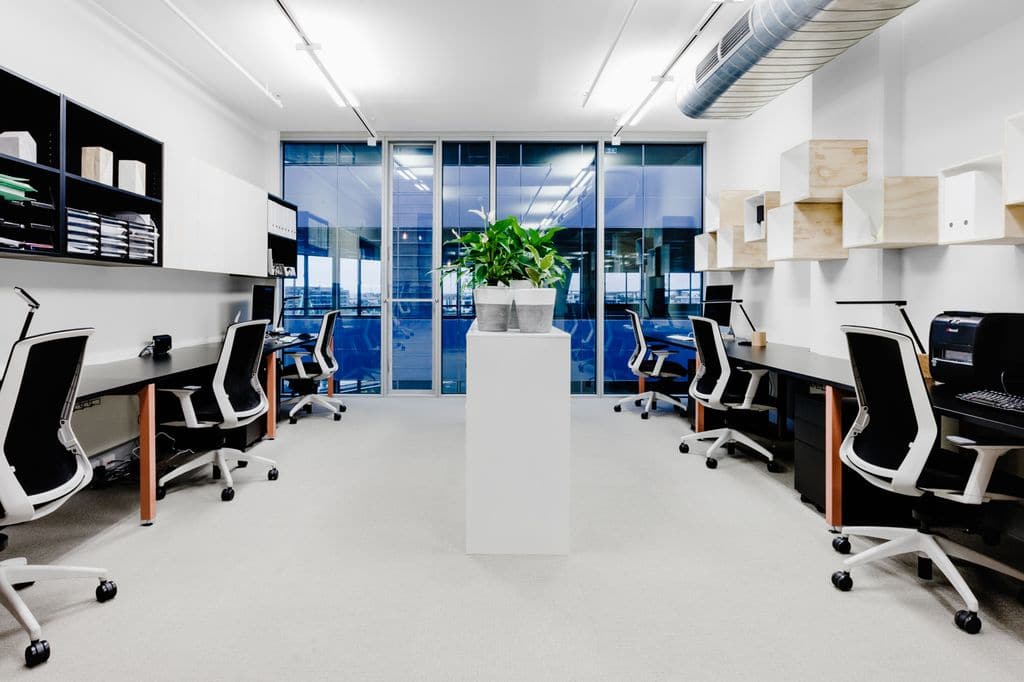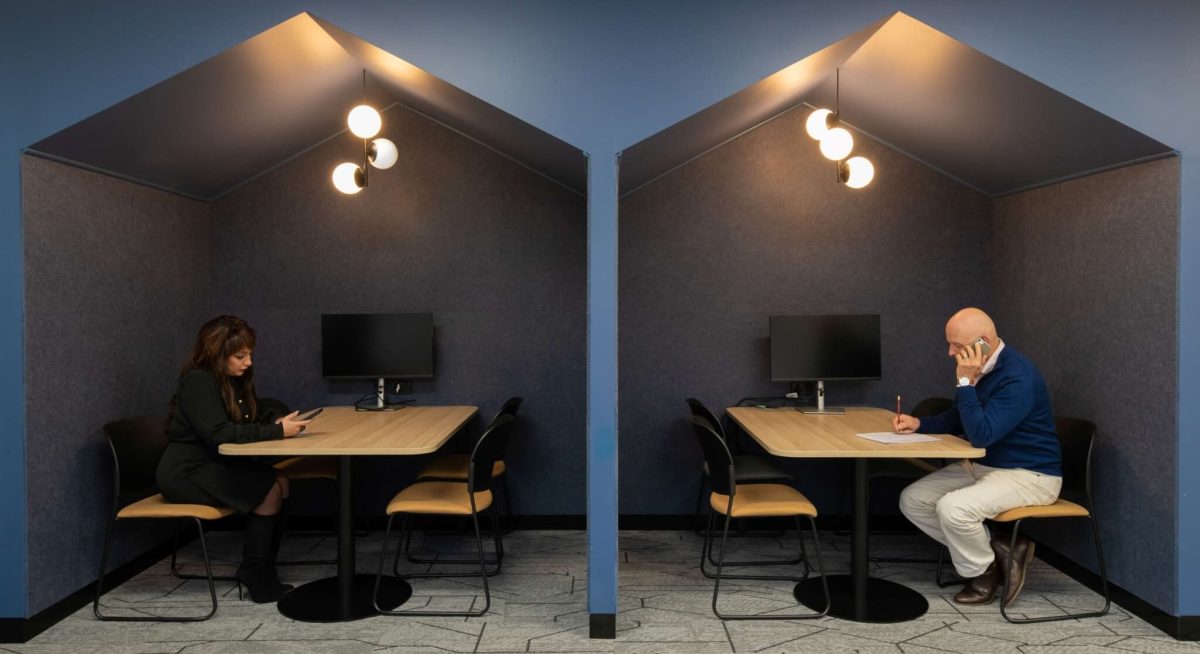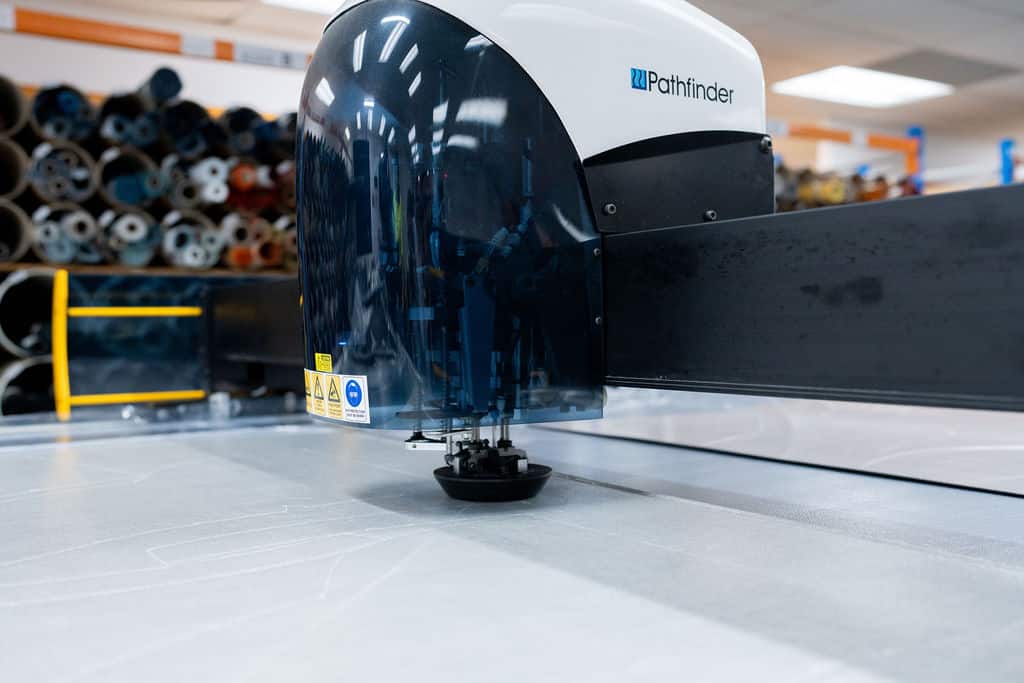Whether you’re designing an office for a bustling corporate environment or setting up a comfortable space for remote work, ergonomics is crucial. A well-organised, ergonomic office fit-out does more than just promote physical comfort—it boosts productivity, encourages well-being, and leaves a lasting impression on clients and employees alike.
Let’s explore how you can incorporate ergonomic elements into office fit-outs while optimising comfort and performance.
Understanding Ergonomics in the Modern Office
Ergonomics involves designing a workspace that fits the people using it, allowing employees to work more comfortably and efficiently. In an office fit-out, ergonomic organisation means ensuring that every aspect—from chairs to desks to meeting spaces—is aligned to support natural posture, reduce strain, and encourage movement.
Integrating ergonomic principles into office design ensures a balanced combination of comfort, health, and productivity. Poor ergonomics can lead to a range of health issues like back pain, neck strain, and repetitive strain injuries, which ultimately impact performance and job satisfaction.
1. Ergonomic Chair Selection: A Cornerstone of Comfort
The right office chair is central to any ergonomic workspace. When selecting chairs for an office fit-out, it’s essential to focus on adjustability, comfort, and support. Advanta offers a range of seating options specifically designed with ergonomics in mind, from executive chairs to meeting and task chairs. Let’s break down how each of these types can enhance an office space:
Executive Chairs
Executive chairs are ideal for senior staff who spend long hours at their desks. These chairs are designed with an emphasis on both comfort and prestige. Ergonomic executive chairs from Advanta offer high backrests, lumbar support, and extensive adjustability to help users maintain good posture throughout the day. For executive offices, incorporating high-quality, ergonomically-designed chairs sends a clear message—comfort and well-being are as important as style.
Task/Desk Chairs
The task chair is perhaps the most important component of an ergonomic office fit-out. Employees who spend most of their day at a computer need a chair that offers multiple adjustment points—height, lumbar support, armrests, seat depth—to suit different body types and working styles. Advanta’s task and desk chairs are engineered with adaptability in mind, providing users with the ability to tailor their seating arrangement to their comfort.
An ergonomic task chair should be adjusted so that the feet rest flat on the floor, the thighs are parallel to the ground, and the lower back is properly supported. Create cohesive designs by pairing ergonomic desk chairs with adjustable workstations, allowing each workspace to be customised to individual needs.
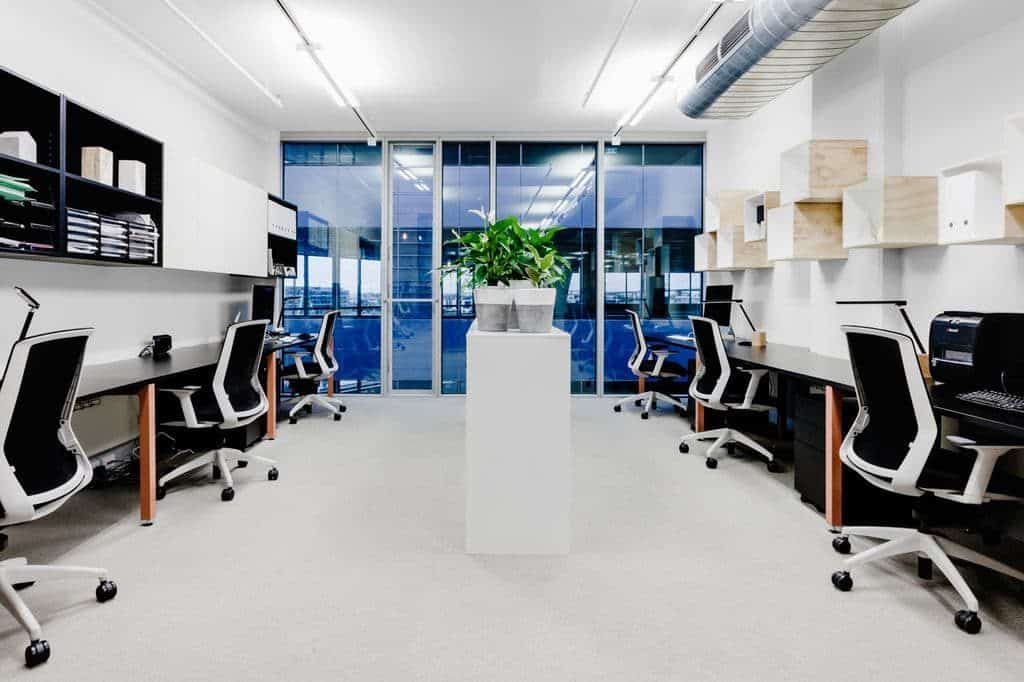
Meeting Room Chairs
Meeting rooms are not just spaces for discussion; they are hubs of collaboration and creativity. Ergonomic meeting room chairs should offer comfort without compromising movement. When clients or employees are sitting for long discussions, poorly designed chairs can hinder concentration and lead to discomfort. Advanta’s meeting room chairs offer comfortable, supportive seating while maintaining the visual appeal required for professional meeting environments.
2. Desk Ergonomics and Height Adjustability
A key aspect of ergonomic fit-outs is ensuring that workstations accommodate different preferences and needs. Height-adjustable desks are an excellent addition to any office, as they give employees the flexibility to switch between sitting and standing. This variety encourages movement, reduces fatigue, and improves overall comfort.
Interior designers can ensure a cohesive and ergonomic workspace by combining height-adjustable desks with the right task chairs. Providing flexibility empowers employees to tailor their workspace to their individual needs—a key principle of modern ergonomic design.
3. Encourage Movement and Collaboration
Movement is an essential element of an ergonomic office. Encouraging employees to move throughout the day helps improve circulation, reduce discomfort, and promote overall health. Interior designers can foster movement by integrating spaces that promote informal gatherings and collaboration—think standing meeting spaces, break areas, and open seating.
Standing meeting spaces, paired with stools or benches, can reduce the amount of time people spend sitting and facilitate more dynamic discussions. Meeting areas designed to cater for both sitting and standing options make collaboration more inclusive and energised.
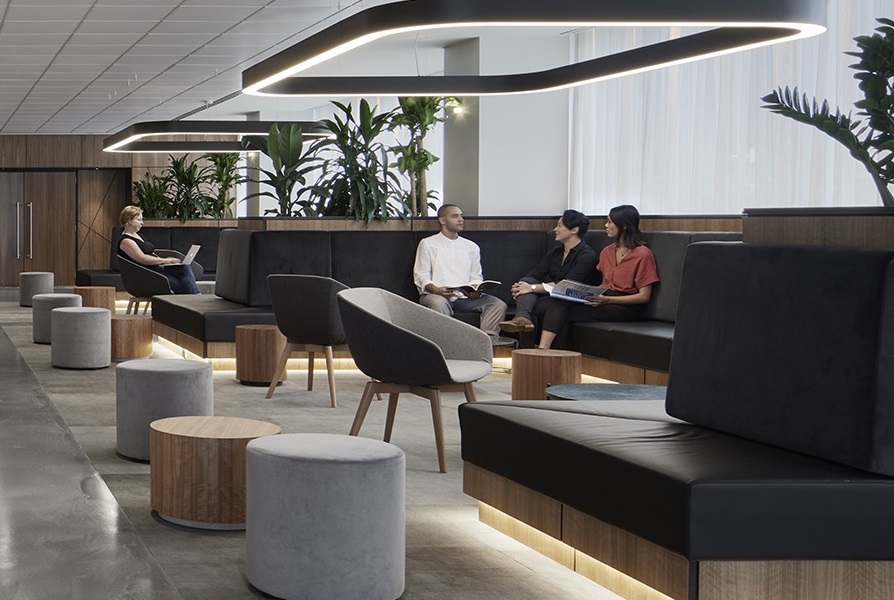
4. Ergonomics for Remote Work and Home Office Fit-Outs
With hybrid work becoming more common, home offices are an extension of the traditional workplace. Designing a home office fit-out with ergonomics in mind can make a significant difference to comfort and productivity. For a home workspace, the core principles remain the same: invest in a quality ergonomic task chair, ensure the desk is at the appropriate height, and create a layout that allows for easy movement.
Advanta’s task chairs are a great solution for home offices as they bring the ergonomic features of a traditional office into the home environment. A comfortable chair, proper lighting, and thoughtful layout are key factors to consider when designing an ergonomic home office fit-out that will help boost productivity.
5. Lighting and Screen Positioning
While seating and desks are foundational elements, other aspects like lighting and screen positioning also play a vital role in ergonomic comfort. Ensuring natural light is complemented with task lighting can reduce eye strain. Screens should be positioned at eye level to avoid neck strain—a monitor arm or riser can help achieve this in both home and commercial office environments.
6. Practical Tips for Office Fit-Outs
- Involve End-Users: When designing an office fit-out, it can be beneficial to gather input from the people who will be using the space. Employees are more likely to feel comfortable and valued if their feedback is incorporated into the design process.
- Prioritise Adjustability: Ergonomic solutions are not one-size-fits-all. Prioritise adjustable seating, desks, and other furniture to cater to individual needs.
- Plan for Future Changes: Office dynamics and staffing levels change over time, so ensure that the ergonomic fit-out has some flexibility built-in, such as modular furniture that can be reconfigured.
Ready to Enhance Your Office Ergonomics?
Organising ergonomics for an office fit-out is about more than just picking furniture—it’s about creating an environment where employees can thrive. By selecting ergonomic chairs, incorporating height-adjustable desks, encouraging movement, and considering lighting and layout, you can create workspaces that promote well-being and efficiency.
If you’re looking to enhance an office fit-out with ergonomic seating, Advanta offers a range of options tailored to suit different needs—from executive comfort to versatile meeting spaces and task chairs designed for all-day use. Explore our range of ergonomic seating solutions to find the perfect fit for your next project.
